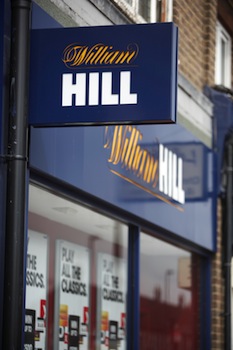UK-based bookmaker William Hill’s retail operating profit fell two per cent last year, despite an increase in gaming machine revenue.
 Source: William Hill
Source: William Hill
In 2014, the company’s retail net revenue remained flat at £911.4m, while its operating profit fell to £193.2m from £196.3m in the previous year. The latter was attributed to the impact of lower over-the-counter wagering net revenue and an increase in cost in sales.
OTC wagering grew slightly, but the combined effect of more “customer-friendly” sporting results in 2014 following an “unusually high” gross win rate in 2013 resulted in lower net OTC revenue.
Gaming machine net revenue was six per cent higher, benefiting from the roll-out of the next-generation Eclipse machine to the first half of the estate that was completed in the third quarter. This growth rate also benefited from the transition to Machine Games Duty in February 2013. Net revenue growth adjusting for this was five per cent.
The company started the roll-out of Eclipse to the remainder of the estate in the third quarter and completed 70 per cent of the process by the end of the year. Gross win per machine per week increased by five per cent, from £897 to £939.
William Hill’s retail estate totalled 2,362 shops by the end of the year, following a programme of 108 shop closures in the second half of the year. This was a response to the government’s plans to increase MGD on March 1, 2015, from 20 per cent to 25 per cent. Despite this portfolio closure, it said it continues to invest in expanding and enhancing the estate, opening 52 new licences, re-siting eight shops and closing 14.
“Retail remains resilient and, with the largest number of betting shops in the UK and as the leading UK digital operator, we are moving closer to a 'one customer' proposition to deliver a seamless experience for our customers across our channels,” said CEO James Henderson.
Overall, 2014 was a "record year" for the company, he said, noting that that group net revenue and operating profit were up eight per cent and 11 per cent, respectively.

